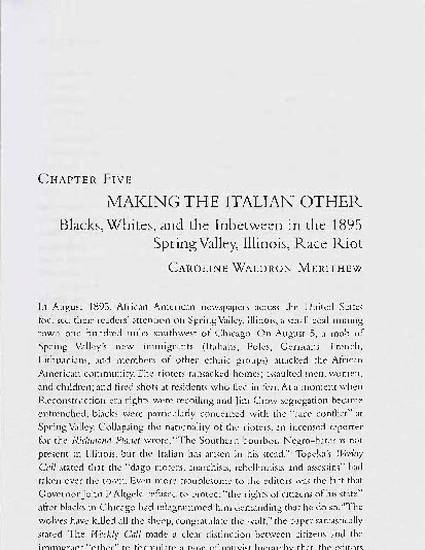
This essay takes the Spring Valley, Illinois, race riot and observes how blacks, Italians, and other new immigrants attempted to empower themselves and lay claim to status at the "nadir" of race relations ill this country. The events leading up to the riot, the assault on the African-American community, and the aftermath of the attack led to vocal outcries against oppression. What constituted oppression, however, was open to interpretation. Furthermore, no group defined itself, or its other, in isolation. Rather, each side responded to the rhetoric of its "opponents" as well as of middle-class whites who became involved in the episode. The riot, then, became a type of social prism in which the meaning and consequences of racial prejudice refracted into clusters of nationality, ethnicity, and class.
Available at: http://works.bepress.com/caroline_merithew/8/

Chapter 5 has been provided for download by permission of the publisher. Permission documentation is on file.
To read the entire book, visit the publisher's website or an academic library.